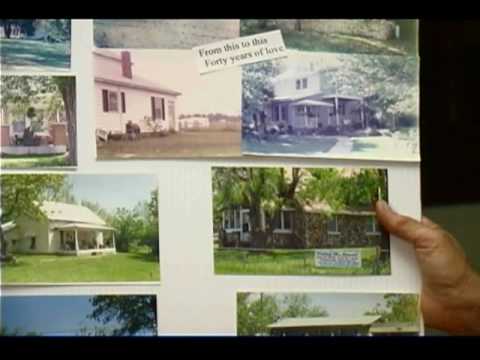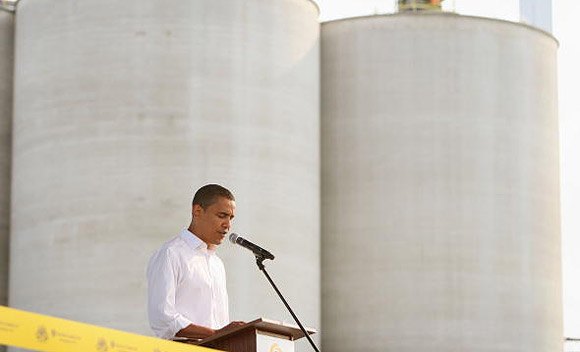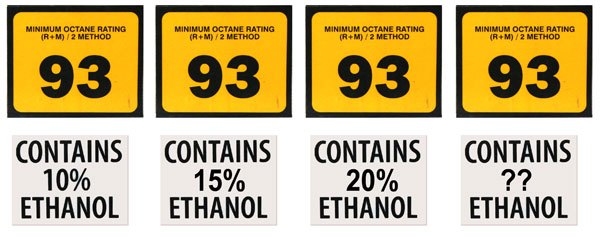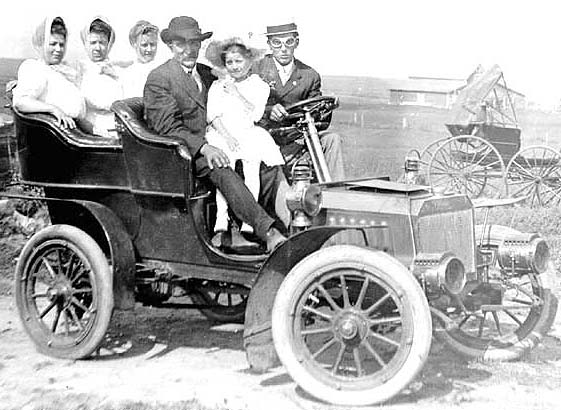#ethanol
China Decides: We'll Eat The Corn, We Won't Drive It
Chinese motorists are spared the joy of ethanol. In China, corn will continue to be eaten, not driven. China’s state news agency Xinhua reports that agricultural experts decided that it is “too early for China to adopt corn-based ethanol fuel to feed automobiles, given the expensive production costs and the country’s large population.” The short version is: “Ethanol? Bu yao!” (No want.)
Regular, Premium Or Single-Malt?
No, it’s not a Mel Gibson joke… Scientists at Edinburgh Napier University have developed a formula for making butanol biofuel out of byproducts of the Scottish whiskey industry, reports Sky News. Apparently researchers
combined so-called pot ale – the liquid from the copper stills distillery equipment – and the spent grains used to make whisky, also known as draff
to create Butanol, an ethanol-like biofuel. Unlike the corn juice, however, Butanol can run in any gas-powered engine and does not degrade components over time.
E85 Boondoggle Of The Day: EPA Lets Corn-Free Ethanol Goal Slide
Since corn-based ethanol began coming under attack for a wide variety of negative environmental and social impacts, the renewable fuels industry has sought to cover the sins of its corn juice gravy train with a coat of “advanced biofuel” greenwash. Accordingly, the ethanol blending mandate (from the 2007 Energy Independence and Security Act (EISA)) has included requirements for cellulosic and non-corn-derived biofuels which the industry says will replace corn… eventually. Unfortunately it seems that “eventually” is going to take longer than was expected, as the EPA has already slashed the 2010 mandate for advanced biofuel blending from 100m gallons to 6.5m gallons. And today the EPA announced rules for the 2011 advanced biofuel blending goal, and once again the non-corn fuels are getting the short end of the stick.
EPA Resists Cheap BP Spill Symbolism, Delays Ethanol Blend Hike
America’s ethanol producers were some of the few Americans optimistic or cynical enough to find a bright side to the BP Gulf spill. Ethanol’s lobbyists-in-chief, GrowthEnergy, decided it would be real cute to run ads highlighting all the bad things ethanol hadn’t done. One of which is not “ Ethanol has never harmed the Gulf of Mexico,” by the way. As the ad parody above points out though, even if the ethanol was creating a dead zone in the Gulf of Mexico for years before the BP spill, there are quite a few other things ethanol hasn’t done. Like this, just in from the AP [via Google]: convince the EPA to buy into its shameful, manipulative PR line and rush a decision on increasing blending limits.
E85 Boondoggle Of The Day: GM Still Tilting At Biofuels
GM is spending about $100 million a year adding flex-fuel capability to our vehicles. We can’t afford to leave this capital stranded… I think it would be very helpful if we could get government assistance. But I really want the oil industry, I want the people who are at this conference, I want the government and I want us to just work together to make ethanol a reality,
This was the message the GM’s Tom Stephens took to the Renewable Fuels Association’s National Ethanol Conference in Orlando. And though Stephens’ exhortation of the ethanol industry makes for a pleasant addition to GM’s typical ethanol message (i.e. the first sentence of the quote), it’s little more than filler. GM’s push to align itself with the ethanol industry continues unabated, as Stephens reveals that half of all GM vehicles will be flex-fuel capable by 2012. The problem is that GM reckons the country needs another 10k E85 pumps (up from the current 2k), and since the ethanol industry would effectively collapse without government support, nobody from the industry is jumping in to take responsibility for this self-serving infrastructure project.
E85 Boondoggle Of The Day: Obama's Corny Ethanol Science
First President Obama said the Senate may forego passing cap-and-trade, by far the most critical piece of the energy legislation that’s brewing on Capitol Hill. And now, the Environmental Protection Agency is suddenly pushing snake-oil, uh, corn-based ethanol in the latest iteration of the renewable fuel standard [ proposed rule PDF], claiming that its substitution for gasoline will reduce greenhouse gas emissions. This contradicts an earlier renewable fuel standard iteration, and most studies of the matter, including a 2008 study in Science, which found that “corn-based ethanol, instead of producing a 20% savings [as per typical life-cycle studies], nearly doubles greenhouse emissions over 30 years and increases greenhouse gases for 167 years.” [Ed: for more on the corn ethanol sham check out TTAC’s E85BOTD archives]
EPA Won't Rule On E15 Based On Two Cars Worth Of Data
Well, the good news is that the EPA has thus far refused to allow gasoline blends of more than ten percent ethanol. The bad news is that the Agency has yet to take a firm stand against the idea of eventually allowing E15 into the nation’s gas pumps. In fact, as the EPA’s response to the ethanol lobbying group Growth Energy’s request to allow E15 [ full document in PDF form here] opens:
It is vitally important that the country increase the use of renewable fuels. To meet that goal EPA is working to implement the long-term renewable fuels mandate of 36 billion gallons by 2022. To achieve the renewable fuel requirements in future years, it is clear that ethanol will need to be blended into gasoline at levels greater than the current limit of 10 percent.
E85 Boondoggle Of The Week: Blend Cap Decision Coming This Week
The EPA is set to rule as soon as tomorrow on the so-called “blend cap,” which forbids the sale of gasoline with more than ten percent ethanol. The petition to raise the blend cap came from a relatively new pro-ethanol lobbying group, Growth Energy, which requested the cap be moved to fifteen percent ethanol. Growth Energy’s request cites foreign oil dependence, “green-collar jobs” and the future of cellulosic ethanol as reasons to bump the blend cap, but as the New York Times reports, the real problem is that the ten percent limit is bumping up against a congressional mandate to blend 15b gallons of biofuels with gasoline by 2012. What the Times fails to mention is the financial incentive for raising the blend cap: the 51 cent-per-gallon of ethanol blended tax credit. In 2007, when gas consumption was at an all-time high and ethanol blending mandates required a mere 4.7b gallons (with 7b actually blended), that credit cost taxpayers nearly $3b. In 2012, when the mandate hits 15b gallons, the taxpayer tab will be closer to $7.65b.
North Dakota Defeats Detroit-Only Tax Break
North Dakota’s House of Representatives has voted down a measure which would have exempted the sale or lease of a Detroit-branded vehicle from the state’s five percent excise sales tax. The Chicago Tribune reports that the measure, which would have cost the state $25.9m, was defeated by a convincing 64-29 vote. “If we do anything as far as tax exemptions, we should have a greater good in mind,” says Rep. Jon Nelson, R-Rugby. “The passage of this bill . . . we don’t expect anything from (the Detroit auto companies), except that they’re going to sell more of the same old, same old. . . . Every technology in the world has grown, doubled or tripled or quadrupled, in the last 20 years, but the pickup I drive gets the same mileage as one 30 years ago,” he said. “Things like that . . . they haven’t progressed, and that is the reason that U.S. auto makers are in . . . the shape they’re in.”





















Recent Comments